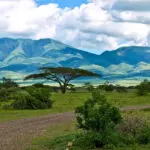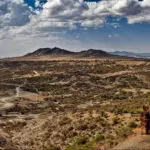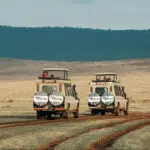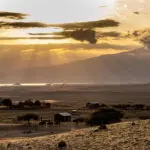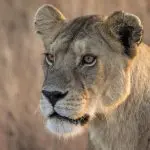Towering at 5,895 meters above sea level, Mount Kilimanjaro is the world’s tallest free-standing mountain and a UNESCO World Heritage Site. Rising otherworldly above the plains of Tanzania, this volcanic giant offers trekkers a rare chance to ascend through five distinct ecosystems, each more breathtaking than the last.
Are you planning on a Kilimanjaro adventure? An ascent to the top of the “Roof of Africa” promises a journey through Earth’s ecological and climatic diversity like no other. Now, let’s take a closer look. Understanding these zones will not only enhance your preparation but also deepen the awe you’re guaranteed to feel when you encounter this marvelous destination for yourself.
Want first-class support for your Mount Kilimanjaro climb? Explore our Mount Kilimanjaro Trekking Tours.
Learn About Mt Kilimanjaro’s Climate
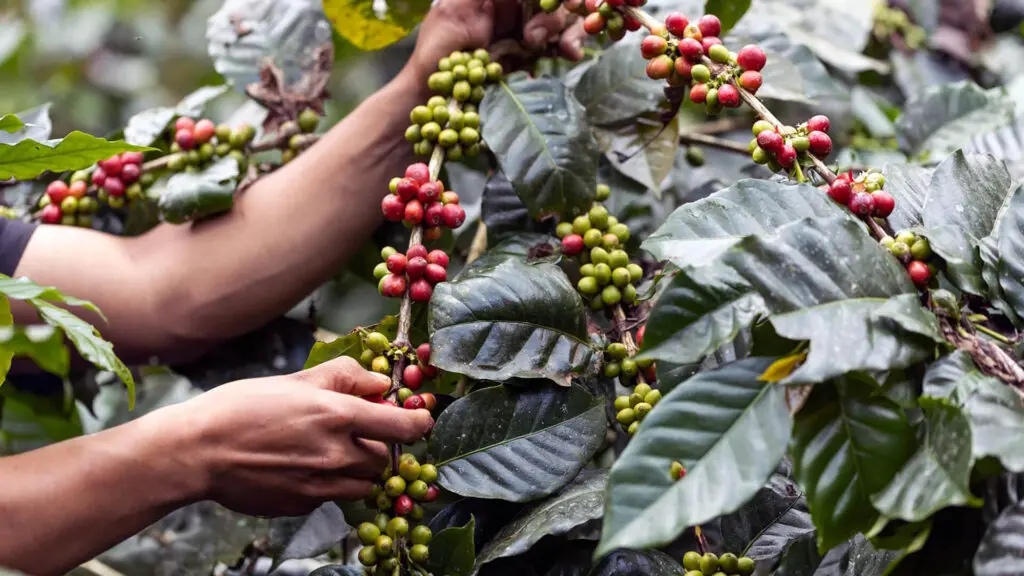
The Cultivated Zone, or Bushland (800–1,800 m / 2,600–6,000 ft)
At the base of Kilimanjaro is the cultivated zone, a patchwork of small farms and villages nourished by volcanic soil. This region thrives on a warm, temperate climate with consistent rainfall, ideal for crops like bananas, coffee, and maize. It’s the only part of the mountain where human habitation flourishes, with Chagga communities maintaining terraced farms.
As you ascend, trails wind through gently sloping terrain, revealing stunning views of the surrounding plains. While the climate is mild, high humidity means early perspiration for climbers. Lightweight clothing and a steady supply of water are essential here.
Temperatures in The Cultivated Zone*
- Daytime: 70–85°F (21–29°C)
- Nighttime: 55–65°F (13–18°C)
- Climate: Warm and temperate, with moderate humidity.
*Please note: While we can speak generally of expected weather conditions, one should always check current forecasts for a more accurate prediction. We recommend visiting mountain-forecast.
The Rainforest Zone (1,800–2,800 m / 6,000–9,200 ft)
As you ascend Kilimanjaro, the cultivated fields give way to the lush rainforest zone of Kilimanjaro – a dense ecosystem brimming with life. This tropical expanse, nourished by heavy rainfall, boasts a fantastic diversity of flora and fauna. Towering trees create a thick canopy under which mosses, ferns, and colorful orchids flourish.
The rainforest buzzes with activity, filled with the calls of colobus monkeys, the rustling of blue monkeys, and the melodious songs of various birds, including turacos and hornbills. Climbers should brace themselves for consistently humid conditions and slippery trails, particularly during the rainy seasons from late March through May and November into mid-December.
This rainforest is crucial to Kilimanjaro’s hydrology, capturing moisture that feeds streams and rivers cascading down its slopes. Proper footwear and waterproof clothing are essential for tackling the muddy paths, while insect repellent helps shield against pesky biting insects.
Our Lemosho Route Trek begins in the rainforest, as do our Machame Route and Northern Circuit Route tours.
Temperatures in The Rainforest Zone
- Daytime: 60–75°F (16–24°C)
- Nighttime: 50–60°F (10–16°C)
- Climate: Humid and rainy, with frequent cloud cover.
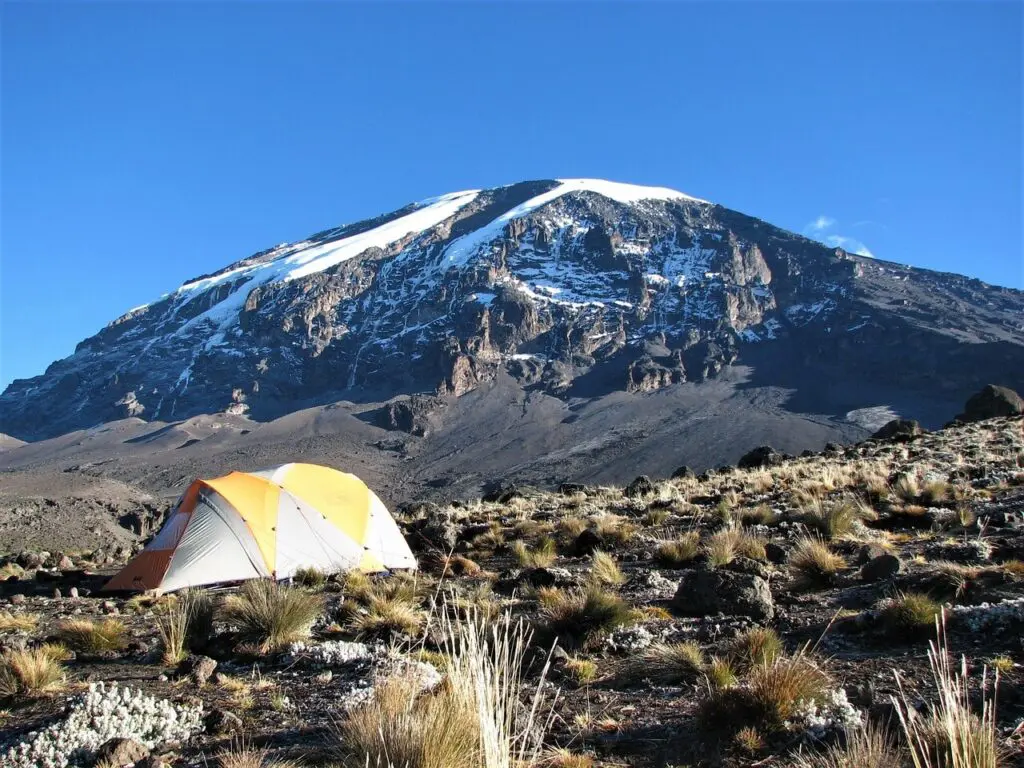
The Heath and Moorland Zone (2,800–4,000 m / 9,200–13,100 ft)
As climbers emerge from the rainforest, they step into the heath and moorland zone, a striking landscape marked by vast open spaces and distinctive vegetation. The air turns cooler and drier, often wrapped in morning mist that cloaks the ground. In this unique environment, giant groundsels, lobelias, and heathers take center stage, their unusual shapes perfectly suited to the changing temperatures and intense sunlight.
From the moorland, climbers can soak in panoramic views of Kilimanjaro’s majestic peaks and the valleys below, evoking a deep sense of solitude. This transitional zone signals the start of thinner air, and climbers may experience a subtle shift in their breathing.
Temperatures in The Heath and Moorland Zone
- Daytime: 50–65°F (10–18°C)
- Nighttime: 35–45°F (2–7°C)
- Climate: Cooler, with dry air and occasional mist.
The Alpine Desert Zone (4,000–5,000 m / 13,100–16,400 ft)
As one ascends above the moorland, the alpine desert zone reveals itself as a harsh and unforgiving environment. The landscape shifts into a stark expanse of volcanic rock, ash, and gravel, where the vegetation becomes scarce. Only a few resilient species, like lichens and tussock grasses, manage to thrive in dry, nutrient-deficient soil. The climate here is extreme; during the day, the sun scorches the land, while at night, temperatures plummet.
To navigate this breathtaking yet barren landscape successfully, it’s essential to stay protected from the sun, keep well-hydrated, and wear layered clothing. With a thinner atmosphere, UV radiation levels rise, making sunburn a genuine concern for those venturing into this terrain. Climbers often face significant physical challenges due to the combination of high altitude, low oxygen, and tough conditions.
All that said, a person does not require mountaineering skills to complete an ascent of Kilimanjaro, but good all-around fitness and some pre-trek training will be highly beneficial. Read our Kilimanjaro FAQs for more information.
Temperatures in The Alpine Desert Zone
- Daytime: 30–50°F (-1 to 10°C)
- Nighttime: 15–25°F (-9 to -4°C)
- Climate: Harsh, dry, with strong sun exposure during the day and freezing temperatures at night.
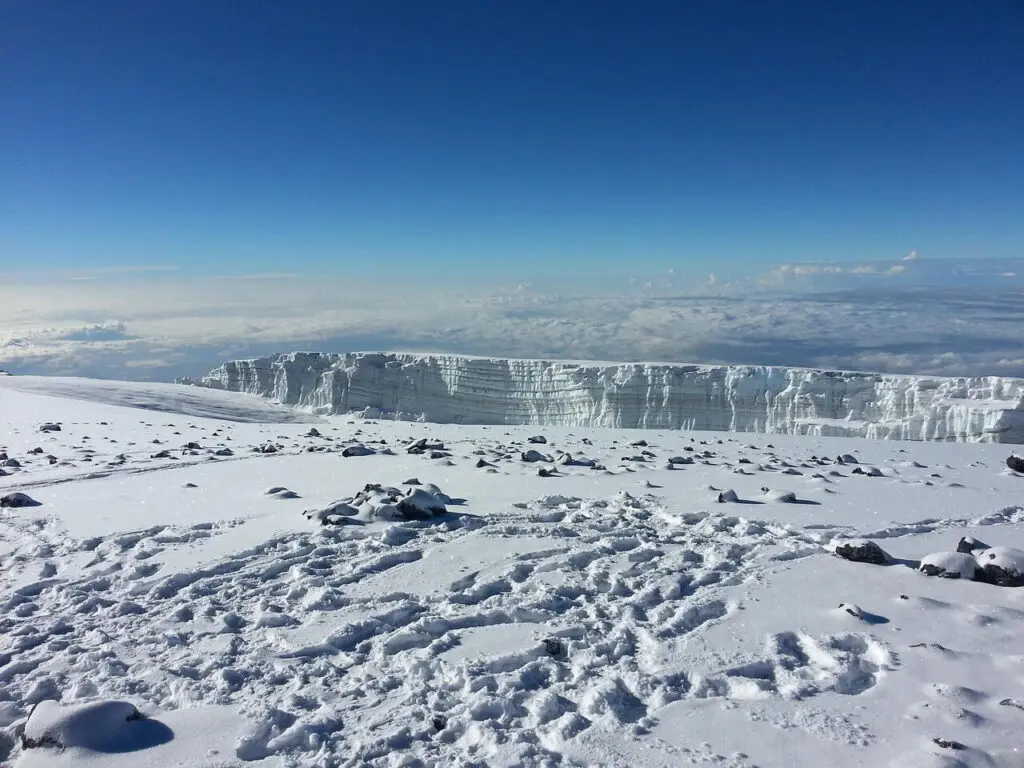
The Arctic Zone (5,000–5,895 m / 16,400–19,341 ft)
It’s time to summit! The arctic zone at the summit of Kilimanjaro is a surreal landscape of ice and snow, where success hinges on solid fitness and good preparation. Temperatures can drop well below freezing, and harsh winds exacerbate the chill, creating an environment where life is nearly nonexistent. With oxygen levels dropping to less than half of what they are at sea level, altitude sickness becomes a real concern for climbers.
Majestic glaciers and ice fields, remnants of Kilimanjaro’s ancient ice cap, dominate the scenery, offering a stunning yet delicate backdrop. Most routes embark on the final ascent at night, aiming to reach the peak by sunrise to witness the first light illuminating the African plains in golden tones. The Arctic Zone challenges adventurers, but it rewards their efforts with breathtaking views and an incredible sense of accomplishment! Standing on Uhuru Peak, the highest point in Africa, brings a feeling of triumph over the physical and environmental hurdles faced along your Kilimanjaro adventure.
Temperatures in The Arctic Zone
- Daytime: 20–30°F (-7 to -1°C)
- Nighttime: -20 to 10°F (-29 to -12°C)
- Climate: Extreme cold, with high winds and low oxygen levels.
Now, what are you waiting for? Take the first steps on your Kilimanjaro Trek and begin planning today. If you are as yet undecided as to what kind of adventure experience you want to enjoy in Africa, why not also consider our African Safaris in Tanzania? If you have any questions at all, please get in touch.
